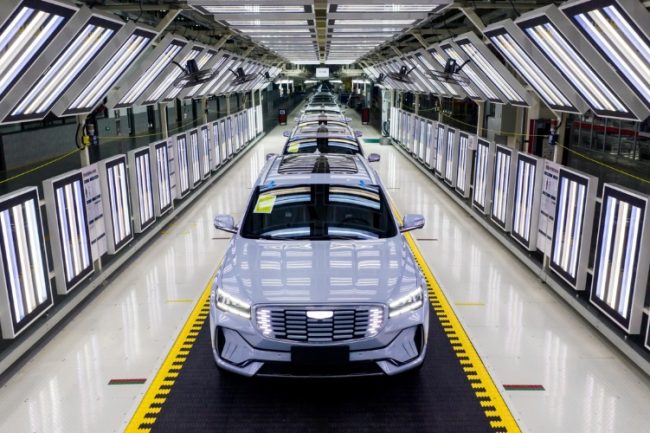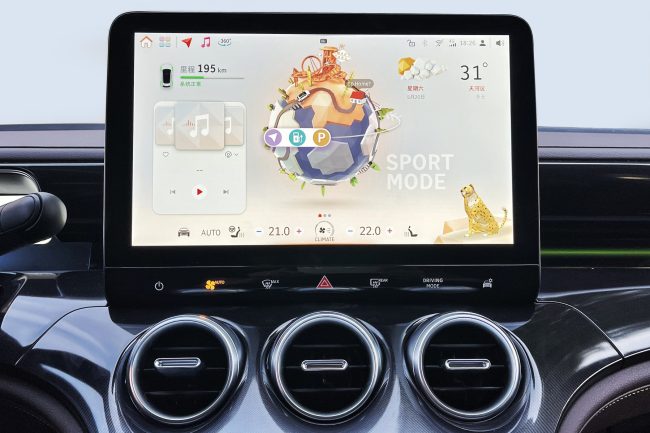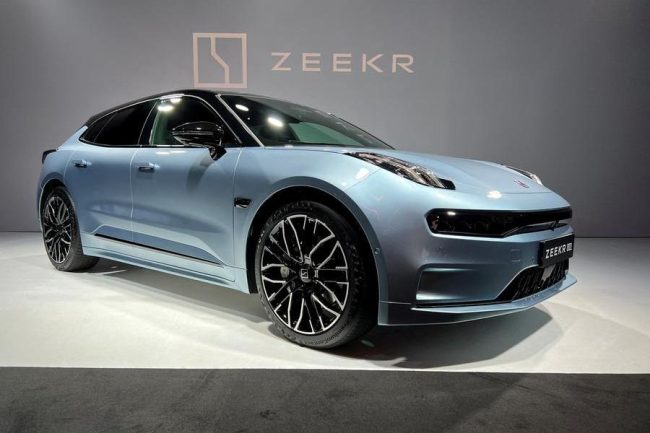Outlining the pivotal factors for the automotive sector in 2024, we observe the following influencers shaping the industry outlook:
- Global car production is expected to increase by 1.8% year-over-year.
- Global pricing dynamics are expected to remain competitive. The overall market is showing signs of strengthening, especially in Europe, where semiconductor shortages have impacted production, leading to decreased discounts since the peak levels observed in the second quarter of 2020.
- Anticipated moderate growth in BEV penetration across Europe, China, and North America, despite the fluctuating nature of incentive plans.
- Need to be mindful of several events such as the European Commission into China-made BEV exports and ongoing global trade tensions between the US and China.
- Advancements in EV battery technology is anticipated to persist into 2024.
- The globalization of the auto sector will persist, with emerging global players like Tesla, BYD, and SAIC continuing to gain market share across regions.
- The U.S. is poised to see Tesla’s charging plug become the industry standard, with a growing number of automakers adopting this plug for their vehicles.
- NEV manufacturers stand to benefit from the decline in battery costs, enabling them to recover lost margins while keeping competitive prices. Battery cell costs have fallen below 2021 levels since the fourth quarter as production capacity and lithium supplies align.
 The key determinant for EV adoption remains affordability, and ongoing technological advancements are anticipated to result in decreased prices across an expanded range of EV models. Foreseen reductions in battery prices, driven by continuous refinements in battery technologies by automakers, are expected to result in both higher battery ranges and more economical EV prices.
The key determinant for EV adoption remains affordability, and ongoing technological advancements are anticipated to result in decreased prices across an expanded range of EV models. Foreseen reductions in battery prices, driven by continuous refinements in battery technologies by automakers, are expected to result in both higher battery ranges and more economical EV prices.
The European auto sector is strategically focusing on concurrently scaling up battery capacity and launching electric vehicles. This strategy contrasts with the Chinese approach, where battery capacity was developed before the introduction of BEVs. In North America, the Inflation Reduction Act is expected to play a protective role for the car industry, similar to the supportive measures provided by the Chinese government for their domestic car and battery industry.
Looking ahead, the future of cars is envisioned as more than just transportation; it’s becoming a hub for communication, work, and play. Vehicle-technology features are increasingly critical for Chinese car buyers, with connectivity emerging as the third most important factor in decision-making, following quality and performance. Chinese brands demonstrate a better understanding of local market needs, offering features like large display screens, remote controls via smartphones, and various in-car apps, even in mass-market brands. The transition to EVs is simplifying automotive design and assembly processes, making vehicle connectivity and intelligence even more vital for long-term competitiveness.
A realistic look at ADAS/ Autonomy
The current landscape features autonomous features predominantly in the 0-2+ range, progressing from simple ADAS to hands-off eyes-on assistance. Anticipating growth in Level 3-4 (eyes-off) after mid-decade, with full autonomous Level 5 emerging closer to 2030 and beyond, the industry is witnessing a transformation.
In 2021, approximately 78% of global new passenger vehicle sales had limited autonomy capabilities (L0-1 ADAS functionality), while 22% featured ADAS L2-3 (0% L4-5), according to IHS. Projections for 2023 indicate a shift to 25% for L2-3, with L0-1 dropping to 75%, representing approximately 59.8 million and 20.2 million units, respectively. As the adoption of driver-assist features accelerates, the near-term Total Addressable Market (TAM) is expected to reach about $40 billion by 2026, with $31 billion allocated to ADAS and $9 billion to Autonomous Vehicles (AV). Looking towards 2030, as L4-5 penetration increases, the combined TAM is projected to reach $480 billion ($60 billion ADAS, $420 billion AV). It’s crucial to note that mid- and longer-term TAM estimates could be ambitious, considering the moderation in expectations for reaching L4+ capabilities.
Nonetheless, we observe a shift in the trajectory of developments in ADAS and software-defined vehicles (SDVs), moving beyond mere hype to a phase focused on execution. This evolution indicates a broader and steady movement towards L2+ and L3 driving technology. Mercedes achieved the distinction of being the first OEM to secure governmental approval for L3 vehicles, followed by BMW, and we anticipate more OEMs obtaining L3 approvals in 2024. Notably, recent setbacks in Cruise’s autonomous driving development, with GM scaling back spending after an accident, hint at the challenges and potential delays in achieving full autonomy and widespread use of robotaxis. Despite uncertainties surrounding Cruise, we believe this could redirect the industry towards a more modular and step-changing approach. Moving forward, execution will play a pivotal role in driving adoption.
The year 2023 serves as a reality check for both electrification and autonomous driving, including positive momentum on volume recovery, optimistic expectations for EV adoption, resilient vehicle pricing, but also challenges like UAW labor negotiations, strikes, and an EV/AV slowdown.
Uncertainties continue into the new year. Despite these hurdles, there continues to be persisting interest in this sector.
The EV market is poised to reach an estimated revenue of $561.3 billion in 2023. Projections indicate a compound annual growth rate of around 10% through 2028, culminating in $906.7 billion in sales. The S&P Global Mobility 2024 sales forecast predicts a global sales volume of 13.3 million BEVs in 2024, marking a substantial increase from the 9.6 million units in 2023. This accounts for approximately 16.2% of all global passenger vehicle sales (combining EVs and non-EVs), up from 12% in the previous year. With a sizable growth rate, the EV market will continue to be one of the key areas of technology in the coming years.
GLy ecosystem update:
Polestar is introducing ‘flexible lease’ program, allowing customers to lease the Polestar 2 for a few months, aiming to encourage upgrades to newer models like the Polestar 3.

Under the joint venture between Xinji Meizu Group and Polestar, Polestar Technology’s China headquarters will be established in Nanjing’s Jiangning Economic and Technological Development Zone.
ECARX has announced the establishment of a joint venture with smart, named smart Software Technology Co., Ltd. This collaboration aims to enhance intelligent technology in smart vehicles through technological advances, research and development, and global expansion. The joint venture will leverage both companies’ resources to improve smartOS, integrate technical teams, and incorporate ECARX’s Makalu computing platform with AMD processors and GPUs into smart’s vehicle models.
ClearMotion has secured a significant production order from Nio for its active suspension technology. The ClearMotion1 will be integrated into Nio’s next generation EVs, including the executive flagship sedan ET9. The order covers 3 million units and will be used over the new product development vehicle program life, equipping approximately 750,000 vehicles.
 Zeekr has entered into an agreement with a Singaporean company to distribute Zeekr 009 MPVs and Zeekr X urban SUVs in Singapore, with deliveries set to commence in the second half of 2024. This move is part of Zeekr’s broader strategy to sell vehicles in Europe, the Middle East, and select Asian markets.
Zeekr has entered into an agreement with a Singaporean company to distribute Zeekr 009 MPVs and Zeekr X urban SUVs in Singapore, with deliveries set to commence in the second half of 2024. This move is part of Zeekr’s broader strategy to sell vehicles in Europe, the Middle East, and select Asian markets.
SiEngine, a chip startup backed by Geely, reports that its Dragon Eagle-1 chip is now integrated into over 200,000 vehicles, including various EV models from Geely’s Lynk & Co brand and other electric vehicle manufacturers for more than 20 different models, boasting features like an 8-core CPU, 14-core GPU, and programmable NPU, ISP, VPU, and DSP clusters.
Geely Automobile Holdings has set a sales volume target of 1.9 million units for 2024, a 13% increase from the previous year. The company also aims to increase its sales volume for new energy vehicles by over 66% compared to the total achieved in 2023, without specifying a figure.
A survey commissioned by Ascend Elements reveals that as the electric vehicle (EV) market expands in the United States, more Americans are expressing concerns about the disposal of used EV batteries. The study found that 71% of U.S. adults are worried about the issue, a significant increase from 54% in 2022, with 56% of respondents believing that EV batteries will contribute to “toxic landfills,” up from 48% in 2022.
Volocopter has successfully completed a multi-day flight test campaign in Osaka and Amagasaki, Japan, using their crewed 2X aircraft. This testing campaign marks an important milestone in preparing for the 2025 World Exposition, Osaka Kansai EXPO.
What We’ve Been Reading This Month:
In 2023, India witnessed significant growth in EV sales, with over 1.5 million EVs sold, constituting approximately 6.35% of the total vehicle base. With EV sales experiencing a remarkable 47% growth, totaling almost 3.5 million units, India’s automotive industry is navigating a crucial phase in 2024, focusing on sustainable growth and attracting foreign EV manufacturers, including the potential entry of Tesla into the domestic market.
BYD announced that it produced over 3 million new energy vehicles in 2023, potentially surpassing Tesla’s production for the second consecutive year. While BYD’s annual sales slightly missed CLSA’s expectations of 3.05 million vehicles, the company’s focus on new energy vehicles, including battery-powered and hybrid models, positions it as a significant player in the electric car market.
Xiaomi has unveiled official images of its debut EV, the SU7, which is expected to be available in the domestic market in the coming months after trial production.
The UK car industry is calling for tax incentives and mandatory targets for public charging point installations to encourage more motorists to switch to electric vehicles. The UK government plans to phase out the sale of new petrol and diesel cars by 2030. Currently, EVs account for 16% of new vehicle sales in the UK, with the majority being purchased by businesses rather than private buyers.
Croatian startup Rimac, renowned for its electric hypercar Nevera and collaboration with Bugatti, is set to unveil an autonomous shuttle, Project 3 Mobility, with plans for a 2026 launch. The autonomous vehicle will undergo a pilot program in Zagreb, Croatia, before potential expansion to 20 cities across Europe and the Middle East.
A new hybrid storage facility in Southern California is using retired EV batteries to store and transmit renewable energy to the grid. The facility, operated by B2U Storage Solutions, is the second of its kind and aims to demonstrate the feasibility of giving EV batteries a second life before recycling them.
The content in this letter is for information illustration only. This website contains material sent to GLy Capital by third parties. GLy Capital is not responsible for any error, omission or inaccuracy in this material. GLy Capital reserves the right to omit, suspend or edit any material submitted. GLy Capital is not providing any investment advice or comment in this letter, and you should seek your own independent professional advice regarding any investment decision or advice. Unless otherwise stated, all copyright and other intellectual property rights in the materials on this letter belong to GLy Capital. Such materials may be downloaded or printed for personal use or for use within an individual firm or organisation but may only be used for personal viewing purposes or for viewing within that firm or organisation. Such materials may not be reproduced for or distributed to third parties, or used for commercial purposes, without GLy Capital’s prior written consent. Consent is not required where extracts of no more than a few relevant paragraphs are to be copied to third parties incidental to advice or other activities, provided that the source is properly acknowledged.

